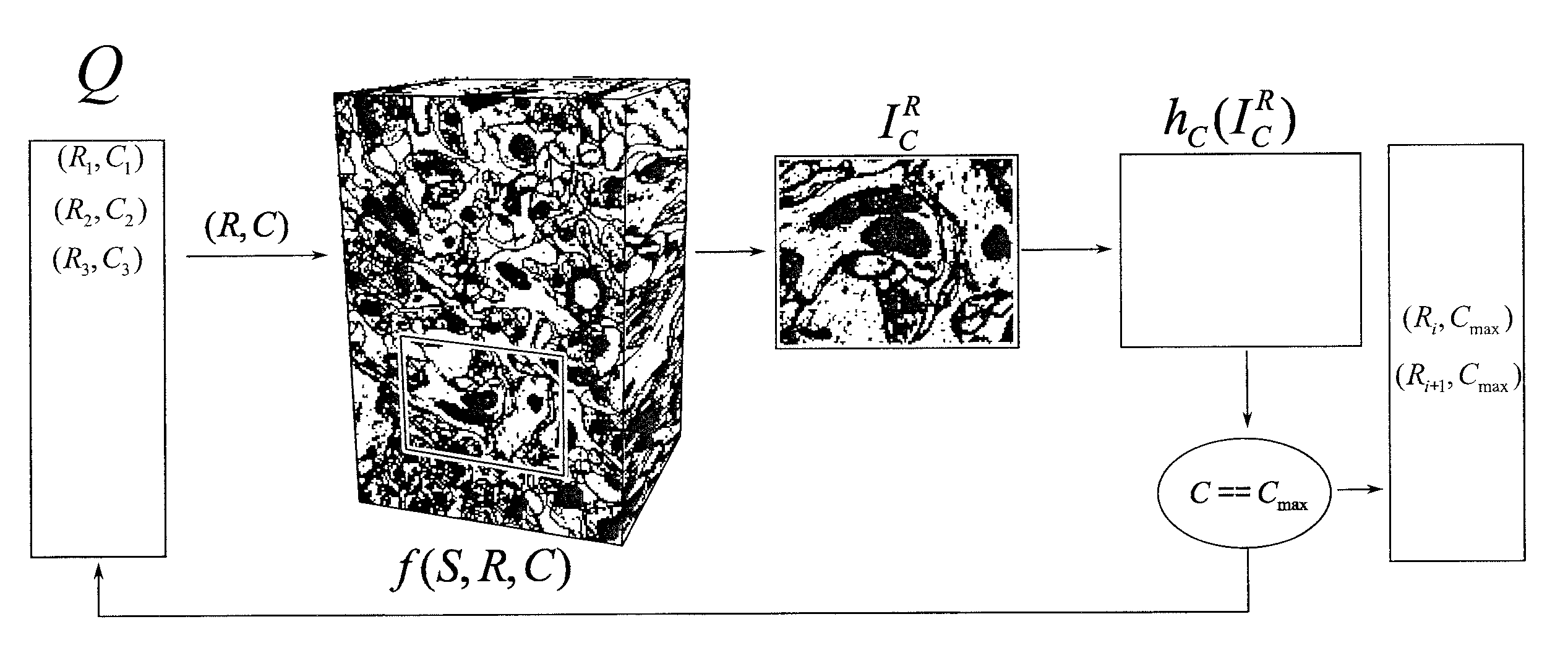Efficient scanning for EM based target localization
a target localization and efficient scanning technology, applied in the field of image processing and acquisition method to capture microscopic images, can solve the problems of prohibitively slow acquisition process, limited long processing time, and desperately slow acquisition process
- Summary
- Abstract
- Description
- Claims
- Application Information
AI Technical Summary
Benefits of technology
Problems solved by technology
Method used
Image
Examples
Embodiment Construction
[0013]The present invention proposes a novel approach to achieving much faster scanning in FIB-SEM microscopes when the images are intended for automated detection, counting, and modeling of predetermined patterns. The inventive strategy involves scanning each image line of the block surface once, or a limited number of times, instead of several times, finding rectangular regions of interest in which target structures might be located, scanning these regions once again, and iterating the process until only relevant regions of the block face have been scanned repeatedly. This process results in much reduced imaging time at almost no performance loss.
[0014]The invention stems from the realization that, if it is desired to count or model element matching a predefined patterns that occupy only a small fraction of a sample, precisely imaging the entire volume is a waste of time. The inventive method aims at optimizing the acquisition time while keeping the limitations of microscopes into...
PUM
 Login to View More
Login to View More Abstract
Description
Claims
Application Information
 Login to View More
Login to View More - R&D
- Intellectual Property
- Life Sciences
- Materials
- Tech Scout
- Unparalleled Data Quality
- Higher Quality Content
- 60% Fewer Hallucinations
Browse by: Latest US Patents, China's latest patents, Technical Efficacy Thesaurus, Application Domain, Technology Topic, Popular Technical Reports.
© 2025 PatSnap. All rights reserved.Legal|Privacy policy|Modern Slavery Act Transparency Statement|Sitemap|About US| Contact US: help@patsnap.com



